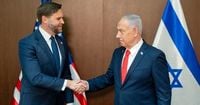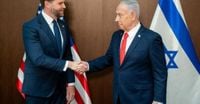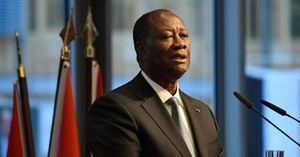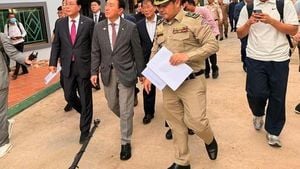In a week marked by high-stakes diplomacy and delicate maneuvering, U.S. Vice President JD Vance landed in Israel to reinforce the Trump administration’s commitment to the fragile Gaza ceasefire and to dispel growing anxieties over American influence on Israeli decision-making. The visit, which unfolded on October 22, 2025, in Tel Aviv and Jerusalem, brought together Vance and Israeli Prime Minister Benjamin Netanyahu amid swirling questions about the future of Gaza, the role of international actors, and the next moves in a region still reeling from last year’s devastating conflict.
Standing side by side with Netanyahu, Vance addressed a question that’s been circulating in both capitals: Is Israel becoming a “protectorate” of the United States? His answer was unequivocal. “We don’t want in Israel a vassal state, and that’s not what Israel is. We want a partnership, we want an ally,” Vance declared, as reported by AP. Netanyahu, echoing the sentiment, dismissed the notion that either country controls the other as “hogwash,” emphasizing the alliance’s foundation in “common values, common goals.”
The timing of Vance’s visit was no accident. The ceasefire, brokered by President Donald Trump and now just under two weeks old, has already weathered its share of turbulence. With U.S. officials expressing concern about Israel’s unilateral actions—like halting aid to Gaza—that could threaten the agreement, Vance’s message was both a reassurance and a nudge. According to Axios, Vance urged Netanyahu to “give a shot” to the Gaza deal and help implement it, a plea made behind closed doors and confirmed by multiple U.S. and Israeli officials.
Netanyahu, for his part, signaled willingness to see the ceasefire through and move toward its next phases, despite his own skepticism about whether the plan could be fully realized. The coming days will see more American heavyweights on the ground: Secretary of State Marco Rubio is scheduled to arrive and meet with Netanyahu, while U.S. envoys Steve Witkoff and Jared Kushner have already been dispatched to Saudi Arabia and the United Arab Emirates to drum up Arab support for the reconstruction and stabilization of Gaza.
But the path ahead is anything but straightforward. One of the most contentious issues is the proposed international security force for Gaza, envisioned as a key component of the ceasefire’s second phase. Many Israelis worry that such a force could tie the hands of their military, limiting its ability to respond to threats. Vance acknowledged these challenges, telling reporters, “We have a very, very tough task ahead of us, which is to disarm Hamas but rebuild Gaza to make life better for the people in Gaza, but also to ensure that Hamas is no longer a threat to our friends in Israel. That’s not easy.” Still, he added, “There’s a lot of work to do, but I feel very optimistic about where we are.”
On the international stage, the Trump administration is seeking to marshal not just diplomatic but also financial and military backing for the plan. According to Axios, the U.S. is in talks with Gulf countries about establishing a "Board of Peace"—potentially chaired by President Trump himself—to oversee fundraising for Gaza’s reconstruction. Meanwhile, Vance floated the possibility of countries like Turkey and Indonesia contributing troops to the international force, though Netanyahu has reportedly expressed strong opposition to Turkish participation, as noted by an Israeli official speaking to AP.
President Trump, never one to shy from bold declarations, took to Truth Social to trumpet the enthusiasm of “numerous of our NOW GREAT ALLIES in the Middle East” who have offered to send forces to Gaza. Yet, Trump insisted, “NOT YET”—a warning to Hamas that any violation of the ceasefire could trigger a “FAST, FURIOUS, & BRUTAL” response. The president’s 20-point plan for the region, while still light on specifics, envisions a heavy international presence to keep the peace.
As these diplomatic overtures played out, the human cost of the conflict remained painfully present. On October 22, Israeli officials confirmed the identification of two more hostages—Arie Zalmanovich and Tamir Adar—whose remains were returned from Gaza, victims of the October 7, 2023, Hamas attack that ignited the war. Since the ceasefire began on October 10, the remains of 15 hostages have been returned to Israel, with 13 more still to be recovered—a central element of the ongoing agreement.
In Gaza, the Health Ministry reported the return of 30 Palestinian bodies by Israel, bringing the total to 195 since the ceasefire, with 57 identified by families. Outside Nasser Hospital in Khan Younis, dozens gathered for funeral prayers, mourning the 54 Palestinians whose bodies have been returned since the truce began. A senior health official in Gaza claimed some of the bodies showed “evidence of torture” and called for an investigation, though Israel has not provided details about the identities or origins of the returned remains.
The International Court of Justice (ICJ) weighed in as well, ruling that Israel must allow the U.N. aid agency UNRWA to provide humanitarian assistance in Gaza. ICJ President Yuji Iwasawa stated, “Israel is under the obligation to agree to and facilitate relief schemes provided by the United Nations and its entities, including UNRWA.” Israel, however, disputes the court’s authority and maintains that the proceedings are biased, a position underscored by the country’s absence from the hearings and continued criticism of UNRWA as being infiltrated by Hamas.
Amid these developments, the Israeli parliament saw far-right politicians take the symbolic step of advancing a bill to annex the occupied West Bank—a move staunchly opposed by the U.S. and unlikely to gain majority support, but one that nonetheless highlighted the deep divisions and political jockeying within Israel at this pivotal moment.
The scars of the war remain raw. More than 68,000 Palestinians have been killed, according to Gaza’s Health Ministry, which does not distinguish between civilians and combatants—a tally regarded as generally reliable by U.N. agencies and independent experts, though Israel disputes the figures without offering its own. The October 7 attack by Hamas militants left around 1,200 dead in Israel, mostly civilians, and saw 251 people abducted.
As the dust settles over Jerusalem and Tel Aviv, and the world watches to see whether this latest ceasefire will hold, the message from both sides is one of cautious optimism. “I never said it was easy, but what I am is optimistic that the ceasefire is going to hold and that we can actually build a better future in the entire Middle East,” Vance said, summing up the hope—and the uncertainty—of this precarious moment.





